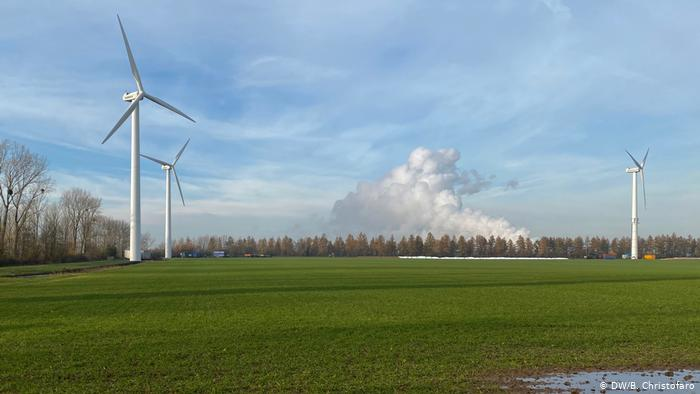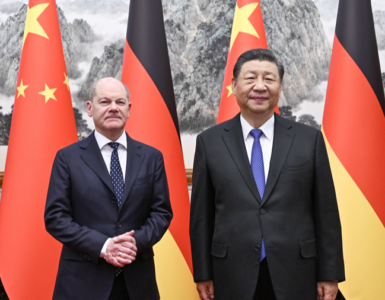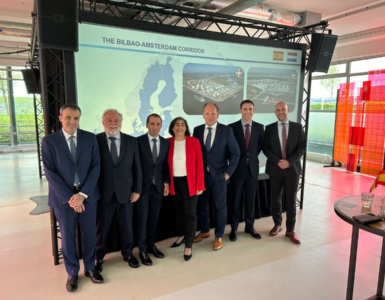Namibia and Germany enter hydrogen deal.
The Namibian government has entered into a hydrogen partnership with Germany.
National Planning Commission director general Obeth Kandjoze and German research minister Anja Karliczek signed an agreement in Windhoek and Berlin.
Speaking on the Namibian-German cooperation on green hydrogen technologies, Karliczek said global competition for the best hydrogen technologies and the best locations for hydrogen production already exists.
🔥 What about we co-host a webinar? Let's educate, captivate, and convert the hydrogen economy!
Hydrogen Central is the global go-to online magazine for the hydrogen economy, we can help you host impactful webinars that become a global reference on your topic and are an evergreen source of leads. Click here to request more details
She said in Germany’s view, Namibia poses particularly great opportunities.
Anja Karliczek, German minister said.
We jointly want to make use of them. I am therefore proud that we are the first country to formally conclude a hydrogen partnership with Namibia.
“The Federal Ministry of Education and Research will provide up to 40 million euro in funding from the Economic Stimulus and Future Package for cooperation within the framework of this partnership,”
Karliczek said Namibia has “enormous potential” for the start-up of a green hydrogen economy, because the country has large, previously unused areas.
She went on to say that the wind velocities in Namibia make the generation of wind power particularly profitable, adding that the potential for solar power is even greater, since Namibia has more than 3 500 hours of sunshine per year.
“That is almost twice as much as in Germany. We therefore assume that a kilo of hydrogen from Namibia will eventually cost between 1,50 and 2 euro. That would be a worldwide peak value that could become a huge locational advantage for hydrogen ‘made in Namibia’.”
“The National Hydrogen Council calculates a hydrogen demand of 1,7 million tonnes per year by 2030 for German industry alone without refineries, and this demand will continue to rise thereafter. This demand forecast shows we need large quantities and favourable kilo prices quickly. Namibia can deliver that,” she said.
Karliczek said the latest report of the Intergovernmental Panel on Climate Change has once again shown that the world needs to step up the pace on climate protection.
She said global warming is hitting countries producing hardly any carbon dioxide emissions particularly hard, such as Namibia.
“But they have the sun and the wind, which are key factors for generating renewable energy and reducing emissions through green hydrogen. Namibia was one of the first countries in Southern Africa to recognise the potential of a green hydrogen economy and plans to publish its own hydrogen strategy before the end of November. Germany will play a central role in its implementation,” the German minister said.
Green hydrogen expert Stefa Kaufmann said a hydrogen economy would be successful if the opportunities of the energy carrier of the future are used jointly and internationally.
He said this is the only way to achieve the Paris Agreement’s protection goals.
This is why international cooperation in research and innovation in green hydrogen technologies is an essential pillar of the federal government’s national hydrogen strategy.
Kandjoze said the two governments will join hands to build a future that reflects the aspirations of their people.
Obeth Kandjoze, National Planning Commission director general.
Namibia is particularly vulnerable to the impacts of climate change.
“Two thirds of our electricity comes from hydropower, which depends on rain and the rivers near Ruacana. Some 23% of our labour force depends on agriculture. Prolonged droughts, such as we have recently experienced, are just a harbinger of catastrophic conditions for many of our fellow citizens. We must act now,” he said.
He said the two governments intend to provide scholarships for young Namibian scientists and engineers to develop skills among their peers in Germany.
“We also intend to provide funding for feasibility studies and pilot plants that will open up competitive solutions with cutting-edge technologies and leverage the potential for green hydrogen in Namibia identified by our scientists,” Kandjoze said.
Namibia aims to export green hydrogen before 2025.
Due to its low population density and moderate population development, it will be able to meet its own demand for renewable energy and green hydrogen quickly and reach the threshold for exports relatively quickly.
Namibia, Germany enter hydrogen deal, August 27, 2021









1 comment